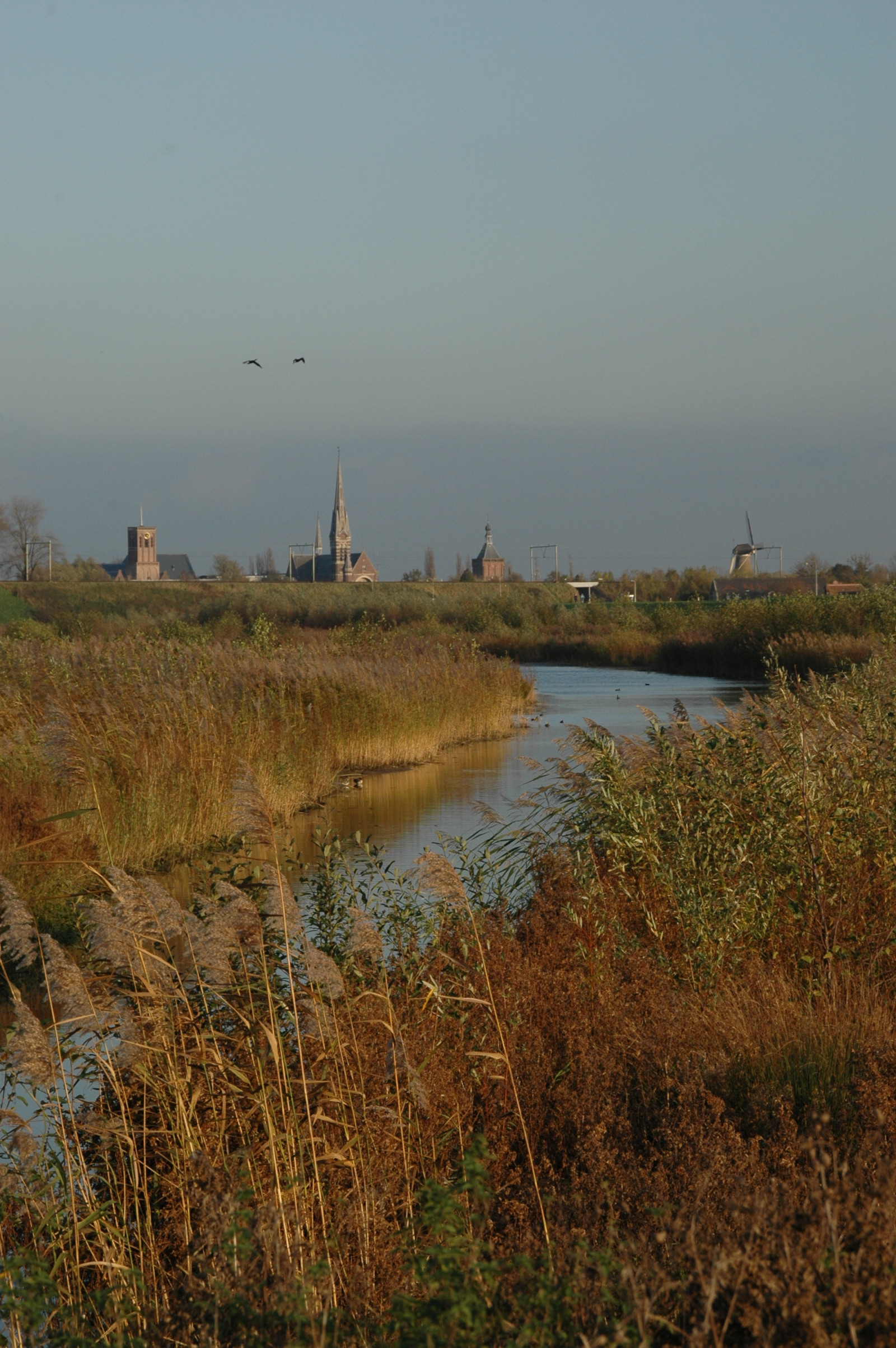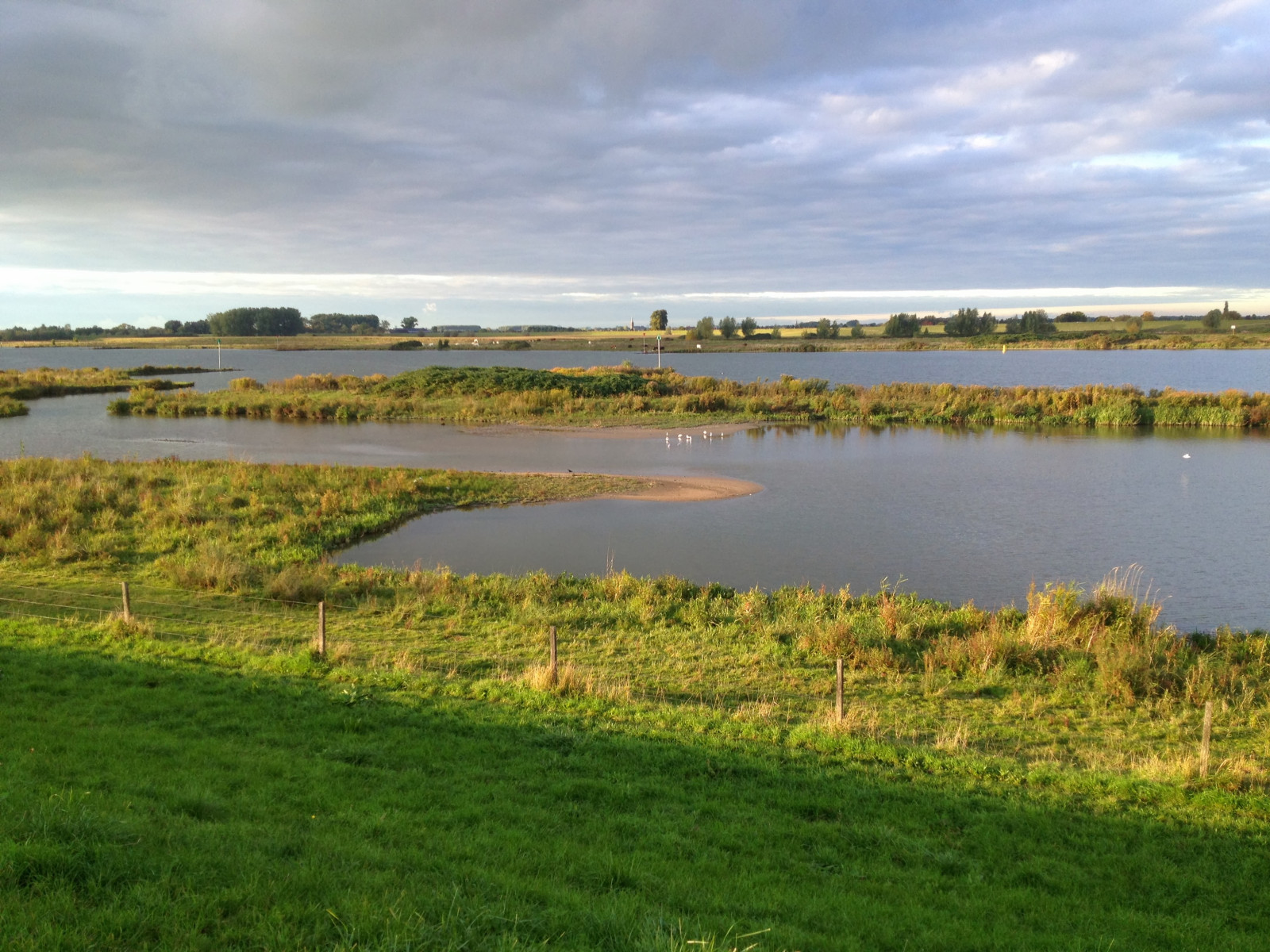Description
De Baarsemwaard and Goilberdingerwaard are nature development areas with a varied bird population. The floodplains were partly excavated around 2000 as a measure to lower the water level. In addition, oxbows, marshes and herb-rich grasslands with hawthorn thickets have been created. The area is extensively grazed. Next to Fort Werk aan't Spoel is an old orchard. Fort Everdingen is located on the west side.
The oxbows in the Baarsemwaard and the lake in the Goilberdingerwaard with its characteristic sawtooth-shaped bank attract many waterfowl all year round. Of the many duck species here Rødhodeand can be mentioned as a special feature. In the summer, a colony of Makrellterne resides on concrete bunkers from WWII. There are also several pairs nesting Hvitkinngås. Foraging here include Svartterne and Skjestork.
The sandy summer dikes with hawthorn thickets in combination with rough riparian vegetation and willow bushes are a Valhalla for songbirds: Løvsanger, Gransanger, Munk, Stillits, Grønnfink, Tornirisk, Myrsanger and Tornsanger. The reed strips along the oxbows are also breeding grounds for Gresshoppesanger, Sivsanger, Rørsanger, Blåstrupe and Cettisanger. The Sivhauk hunts here. There is always a chance of a Rørdrum. Even Dvergrørdrum has been a guest. In winter one sometimes sees a wandering group of Skjeggmeis and you hear several Vannrikse calling.
Heipiplerke, Svartstrupe, Rødstilk and Tjeld breed in the grasslands of the Goilberdingerwaard. In autumn, the wettest parts are often a place to see Enkeltbekkasin. The orchard and the adjoining forts and farms also contribute to the varied birdlife, including Skogdue, Kirkeugle, Kattugle, Hornugle and Stork. The Isfugl breeds near the forts and often fishes in the oxbows.
The shallow lagoons of the Baarsemwaard are a good place at low tide to see plastering waders such as Avosett, Svarthalespove, Dverglo, Sandlo and sometimes sandpipers. Myrrikse has also been seen here. Taksvale collect clay to build nests in the adjacent residential area.
_________________________
Nederlands: De Baarsemwaard en de Goilberdingerwaard zijn natuurontwikkelingsgebieden in eigendom van Het Geldersch Landschap. Deze uiterwaarden ten westen van de spoordijk bij Culemborg, aan weerszijden van Werk aan het Spoel hebben een gevarieerde vogelbevolking. De oevers van de Lek tot aan de zomerdijk zijn in beheer bij Rijkswaterstaat. De uiterwaarden zijn omstreeks 2000 deels afgegraven als waterstandverlagende maatregel. Daarbij zijn strangen, moeras en kruidenrijke graslanden met meidoornstruwelen gecreëerd. Het gebied wordt extensief begraasd. Naast fort Werk aan’t Spoel ligt een oude boomgaard. Aan de westzijde ligt Fort Everdingen.
De strangen in de Baarsemwaard en de plas in de Goilberdingerwaard met kenmerkende zaagtandvormige oever trekken veel watervogels aan het hele jaar door. Van de vele eendensoorten hier kan als bijzonderheid Rødhodeand genoemd worden. Op betonnen bunkers uit WOII zit zomers een kolonie van Makrellterne. Ook nestelen er meerdere paartjes Hvitkinngås. Op trek fourageren hier onder meer Svartterne en Skjestork.
De zandige zomerdijken met meidoornstruweel in combinatie met ruige oevervegetatie en wilgenbosjes zijn een walhalla voor zangvogels: Løvsanger, Gransanger, Munk, Stillits, Grønnfink, Tornirisk, Myrsanger en Tornsanger. De rietstroken langs de strangen zijn daarnaast broedplaatsen voor Gresshoppesanger, Sivsanger, Rørsanger, Blåstrupe en Cettisanger. De Sivhauk jaagt hier. Er is altijd kans op een Rørdrum. Zelfs Dvergrørdrum is er gast geweest. In de winter ziet men er soms een zwervend groepje Skjeggmeis en hoor je meerdere Vannrikselen roepen.
In de graslanden van de Goilberdingerwaard broeden Heipiplerke, Svartstrupe, Rødstilk en Tjeld. Op de natste delen zitten in de herfst vaak Enkeltbekkasinpen. De boomgaard en de aanliggende forten en boerderijen dragen eveneens bij aan de gevarieerde vogelstand, waaronder Skogdue, Kirkeugle, Kattugle, Hornugle en Stork. De Isfugl broedt bij de forten en vist vaak in de strangen.
De ondiepe lagunes van de Baarsemwaard zijn bij laag water een goede plek om in het voorjaar pleisterende steltlopers te zien zoals Avosett, Svarthalespove, Dverglo, Sandlo en soms strandlopers. Hier is ook Myrrikse gezien. Taksvale verzamelen er klei om nesten te bouwen in de aangelegen nieuwbouwwijk.
Details
Access
There is a parking at Fort Werk aan't Spoel, where there is also a place to eat and drink. From there you can walk into the Goilberdingerwaard. A walk in the Baarsemwaard can start from the railway bridge or at the monument. Circular walk is only possible including the dike. From the dike there is a good view of the floodplains everywhere. Beautiful is the view from the railway dike (take the stairs). The indicated paths on the map inside the area are not accesible.
_________________________
Nederlands: Er is parkeergelegenheid bij Fort Werk aan't Spoel, waar ook een eet- en drinkgelegenheid is. Vandaar kan men de Goilberdingerwaard inlopen. Een wandeling in de Baarsemwaard kan starten vanaf de spoorbrug of bij het monument. Rondwandeling is alleen mogelijk inclusief de dijk. Vanaf de dijk is overal goed zicht op de uiterwaarden. Heel mooi is het uitzicht vanaf de spoordijk (neem de trap). De op de kaart aangegeven paden binnen het gebied zijn niet toegankelijk!






.jpg)